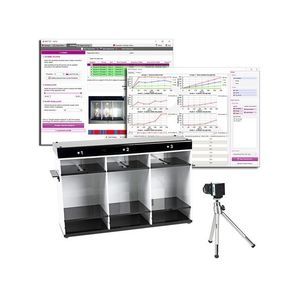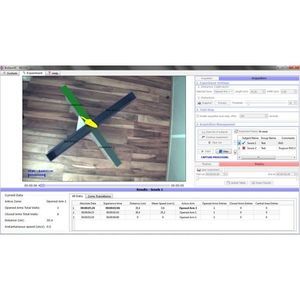
Mice animal research cage BIO-SOCIALmodular
Add to favorites
Compare this product
Characteristics
- Animal type
- for mice
- Configuration
- modular
Description
A popular and standard paradigm to study general social behavior, and to assess social interaction in mice - a must for research studies on neophobia anxiety and depression-like behaviors.
Presentation
The social interaction test by pairs provides a popular and standard paradigm to study general social behavior.
This test allows the experimental subject to freely explore an unfamiliar congener in its home cage or in a neutral environment. Social exploration is measured by the time spent by the experimental subject around the congener as well as the amount and duration of behaviors that compose social interaction (e.g. sniffing, following, grooming, biting, mounting, wrestling, etc). Social avoidance behavior is used in a wide variety of models, for instance for assessing neophobia anxiety and depression-like behaviors.
Operating principles
Our social box provides an ideal experimental environment to conduct social interaction tasks. The box is divided in three interconnected compartments. Sliding doors are available for confining the animal in one specific compartment during the test. Two grid enclosures containing “stranger” mice can be placed in the box allowing a close interaction with the animal tested (as well as protection in case one of them manifests strong aggressive behavior).
Features
• Removable compartment dividers allow using the box for many behavioral paradigms
• Material does not retain odors
• Manual sliding doors
• Optimized for video-tracking systems with non-reflecting material
• Classical social interaction test widely used in literature
• Quickly realized (5-10 minutes)
• Simple to set up and use
Catalogs
No catalogs are available for this product.
See all of Bioseb‘s catalogsRelated Searches
- Anatomy model
- Demonstration anatomical model
- Demonstration simulator
- Thermometer
- SpO2 monitor
- Digital thermometer
- Surgical anatomical model
- Surgical simulator
- Infrared thermometer
- Whole body anatomical model
- Non-contact thermometer
- Pad simulator
- Emergency care simulation unit
- Vital signs monitoring device
- Probe thermometer
- Compact pulse oximeter
- Wound management simulator
- Articulated anatomical model
- Suture simulator
- Blood pressure vitals monitor
*Prices are pre-tax. They exclude delivery charges and customs duties and do not include additional charges for installation or activation options. Prices are indicative only and may vary by country, with changes to the cost of raw materials and exchange rates.







